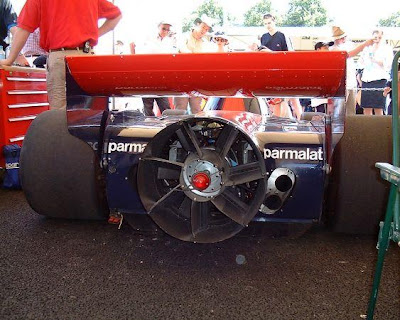An interesting engineering xcersice indeed, when I currently work with surface-effect coastal corvettes in Norway.
http://www.umoe.com/subsidiary/umoe-mandal/
First of all, at such low pressures as this, 2-5 kPa perhaps, you can behold the air as incompressible, why the fan's power will always be flow times pressure differential to the atmosphere, which simplifies calculaton.
The pressure-differential over the fan will basically be downforce over pressure-xposed area, 10 kN (1 metric ton) over 2 sq meters means a pressure diff of 5 kPa (0.05 Bar), just as an xample.
The flow needed is more difficult to estimate, when that will largely depend on what ground-clearance you can maintain as this will effectively act as a restrictor, creating the under-pressure as the air flows in. A near zero clearance, as with sliding shirts all around, flow can be kept at a minimum as long as the fan can produce the needed pressure-differential to the atmosphere.
But if you imagine a 5 kPa dynamic pressure drop over the ground clearance, pd = Rho * air-speed^2 / 2 (simplified);
If Air-speed is 100 m/s, it gives the desired 5 kPa.
If the two sq. meter area has a circumferance of 6 meters and ground-clearance is 5 mm, flow will be 3 m^3 per second.
Conclusively: Fan output will be 5 kPa times 3 m^3/sec, which means 15 kW. At a 75% efficiency, fan motor should be 20 kW.



